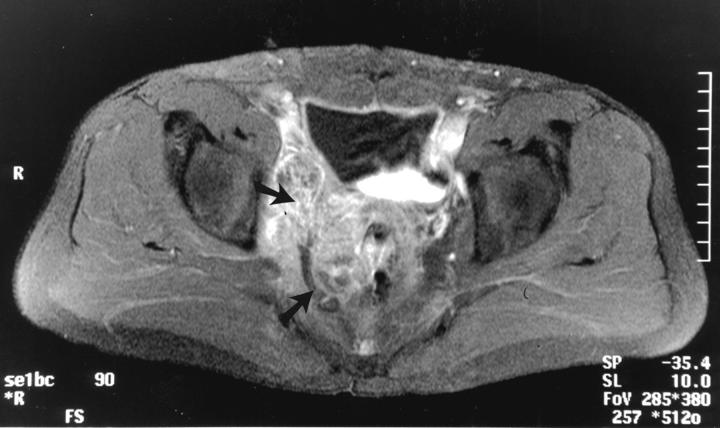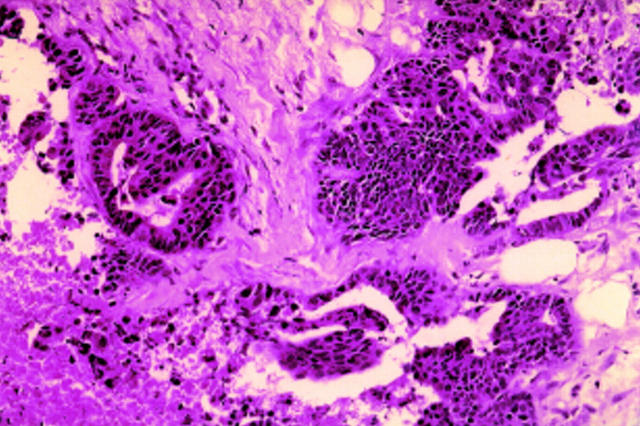Abstract
AIMS—Restorative proctocolectomy with ileoanal anastomosis is one of the treatments of choice for patients suffering from familial adenomatous polyposis (FAP). However, any residual rectal mucosa left behind after mucosectomy is at risk for the development of neoplasia. CASE REPORT—A 31 year old male patient with FAP underwent restorative proctocolectomy with a pelvic ileal pouch-anal anastomosis. Seven years later he presented with right inguinal and perianal pain. A diagnosis of invasive columnar cuff carcinoma was made. DISCUSSION—Islets of columnar epithelium may be left behind after restorative proctocolectomy, exposing the patient to later malignant change. This risk must be emphasised and prevented by regular surveillance of the anastomosis. Keywords: familial adenomatous polyposis; anastomosis; adenocarcinoma
Full Text
The Full Text of this article is available as a PDF (124.6 KB).
Figure 1 .
Magnetic resonance image showing extrinsic compression of the ileal pouch (arrows) with distention of the proximal bowel.
Figure 2 .
Invasive adenocarcinoma within the pouch wall (Tru-cut biopsy; haematoxylin and eosin, original magnification ×100).




